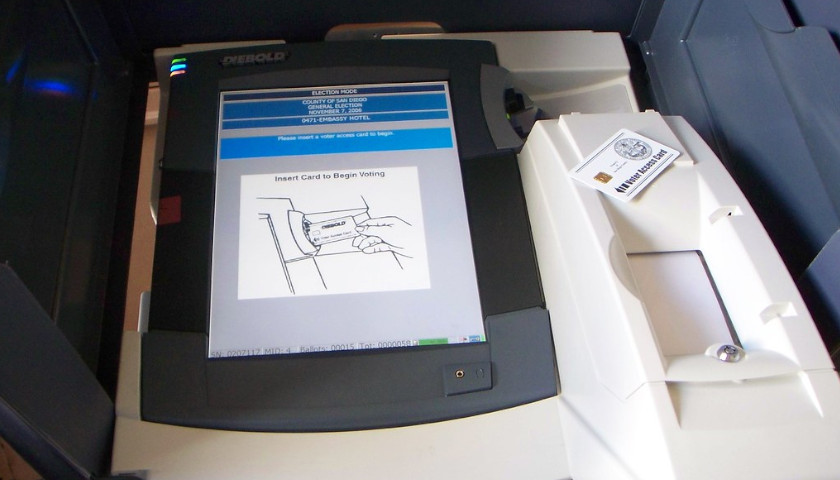by Edward Ring
Scope insensitivity happens whenever a statistic has huge emotional impact but in reality has little relevance to the issues and challenges it purports to illuminate.
It is scope insensitivity that makes conscientious Californians willing to put a bucket in their showers. They believe that by faithfully capturing some of that shower water that otherwise goes down the drain, and painstakingly reusing that water to fill their toilet tank, or water some houseplants, they will help manage water scarcity in California.
This is well-intentioned but ridiculous. Imagine if 40 million Californians saved a gallon of water from their daily shower every day, never missing a day, as if every Californian would ever do such a thing. That would amount to 44,836 acre-feet per year, which equates to one-half of one percent of California’s average annual urban water consumption. And water going down the drain in California’s homes is already either reused, or could be with investment in upgraded wastewater treatment plants.
Examples of scope insensitivity abound. On a grander scale, consider the previously mentioned impact of the proposed Huntington Beach desalination plant, which, if they ever built it, would release 55 million gallons of brine into the ocean daily. That seems like a terrifying amount of brine, even though desalination brine is merely somewhat saltier seawater. But the California current sweeps an estimated 250 trillion gallons per day of ocean water past the west coast. The Huntington Beach desalination plant’s projected 55 million gallons of daily brine represents roughly one five-millionth of the water moved by natural current along the coast daily.
In both of these examples, two causes of scope insensitivity can be identified. The first is the unit. If you express a quantity using a smaller unit of measure, you can come up with a bigger number. So instead of saying 169 acre-feet, why not say 55 million gallons? An eight-digit number sounds far more impressive than a three-digit number. The second cause of scope insensitivity is when there is a lack of relevant context. Putting something into an honest context is to offer a relevant denominator.
In the example of the bathtub bucket, for example, the numerator is 40 million gallons per day, and the unit is gallons. A numerator that would put this into a genuinely informative context would be acre-feet per year, i.e., 44,836 acre-feet per year. One can then assign a relevant denominator, which is all urban water consumption per year, i.e., 7.7 million acre-feet per year. If the goal is to impact urban water consumption by convincing 40 million Californians to perform this daily exercise, then Californians deserve to understand whether or not it will actually make any difference.
Instead, the type of context one typically gets is “enough water to fill 61 Olympic-sized swimming pools every day, which emphasizes the message—this is a lot of water. But that comparison is just replacing one numerator, buckets in showers, with another, big swimming pools. There is no denominator. There is no context.
Combatting scope insensitivity ought to be a top priority for objective journalists, but thanks either to bias, innumeracy, or both, they rarely bother. And thanks to America’s decision to join with Liberia and Myanmar to remain the only three nations in the entire world that retain the Imperial System of weights and measures, even if you try, it’s not easy to intuitively perceive proportions and easily make meaningful comparisons between small and large, between numerator and denominator.
A Confusing Choice of Units
Using the metric system, it is much easier to develop an intuitive grasp of how much impact a change in some small unit will have on a big unit. Everything is based on the decimal system. Ten millimeters equals a centimeter. Ten centimeters equals a decimeter. Ten decimeters, or 100 centimeters, equals a meter. One thousand meters equals a kilometer. For area, it is equally straightforward. A square that is one hundred meters per side is a hectare. A square that is one thousand meters per side is a square kilometer.
As for water volume, the metric system is also straightforward. A one-millimeter cube is a microliter. A cubic centimeter is a milliliter. A cubic decimeter is a liter. A cubic meter is a kiloliter, and that volume of water is a metric ton. And one billion cubic meters is a cubic kilometer.
That’s about all you have to know. The rest follows logically. Learning the metric system may not be a cakewalk, but how much more numeric aptitude does one require to understand the imperial system? Without a decimal-based system of measurements, how many people can possibly make intuitive comparisons between large and small units? Consider this summary of the imperial system:
Three teaspoons are a tablespoon. Two tablespoons make an ounce. Eight ounces make a cup, and 16 ounces make a pint, which is also a pound. Two pints make a quart. Four quarts make a gallon. It takes 7.48052 gallons to equal a cubic foot, and a foot is 12 inches, and inches are typically divided into eighths and 16ths. An acre is 208.71 feet on a side, and a mile is 5,280 feet.
Are you kidding? The imperial system of weights and measures is an archaic joke, and all it does today is make it harder to overcome scope insensitivity. Back in the 1970s, the United States was on the verge of adopting the metric system with the Metric Conversion Act of 1975. But conversion was voluntary, and it never took off. It would be harder now, because today’s ubiquitous and powerful computational tools make it far easier for engineers to use these byzantine measurements. But ordinary people who want to figure out what’s going on with American water infrastructure are among the losers.
Even if Americans used the metric system, it still would not be easy to put data in context. Even if weights and measures were all using the decimal system, there would still be units of time which must always be taken into account. Units of time, for example, require a year to be divided into approximately 365.25 days, a fractional inconvenience that is non-negotiable. Perhaps hours and minutes could have been put into the decimal system, but like Esperanto, that’s probably not going to happen.
So here are some helpful flow conversions: One cubic foot per second is 724 acre-feet per year. One gallon per minute is 1.6 acre-feet per year. One million gallons per day is 1,121 acre-feet per year. And here are some useful volume conversions: One million acre-feet is 1.23 cubic kilometers. One trillion gallons is 3.1 million acre-feet. And so on.
Rather than belabor these conversions, the interested reader may download this water conversions spreadsheet. Instructions are on the spreadsheet. If you mess it up just download a fresh one. There are two tabs, one for flow conversions and one for volume conversions. Any journalist or analyst writing about water policy may find this useful, if not indispensable.
Without Abundant Energy, Water Abundance is Impossible
As we have seen, where there is water, there is energy, and no discussion of optimal water policies can ignore units of energy. Without water, there is no hydroelectric power, and without electricity, water cannot be pumped anywhere, not through treatment filters, nor over mountains and into taps. And since electric energy must be generated, i.e., converted, from some raw fuel, whether it’s photons, or mechanical, or chemical, or combustible, we can’t ignore other units of energy. For that matter, since environmentalists are concerned that most of the current forms of energy in the world are unsustainable and dangerous, we have to consider overall global energy production. Can we produce enough sustainable energy in the world to produce abundant water?
That question will generate as many answers as there are experts to ask, and an attempt will be made to address it in a later installment. For now, let’s focus on California. Here again, we must overcome scope insensitivity. To do that, let’s establish the denominator: Total energy consumed in California. To get an idea of how complex the process is of getting from raw energy sources—fossil fuels, nuclear, hydro, wind and solar—to actual electrons running appliances or furnaces heating homes, Lawrence Livermore Labs and the U.S. Department of Energy have produced a flow chart that merits close study.
While there is a lot to digest in this energy flow chart, it offers valuable insight even without bombarding the observer with numbers. On the left, source fuel inputs are depicted, with the thickness of the lines (not the boxes) denoting the relative quantities of each fuel. Because electricity is not a source fuel, but has to be manufactured either using solar photons, or a fuel cell, or using a generator turned by wind, water, or fossil fuel, the box “Electricity Generation” shows up in the center-left of the flow chart, in order to aggregate and redirect the quantities of source fuels that were converted into electricity. Further to the right, four boxes are used to aggregate and categorize what sectors make use of the various fuels, including electricity, they are “Residential,” “Commercial,” “Industrial,” and “Transportation.”
It is immediately obvious that solar (yellow line) and wind energy (purple line) currently contribute an insignificant share of the total. Moreover, the method used by the study’s authors to estimate the amount of solar energy contributed to the grid greatly overstates the actual amount. Their error was to take the amount of actual solar electricity generated in 2018, 27.5 gigawatt-hours, which converts to 93 TBTU (trillion British thermal units), and improperly inflate it.
Instead of recognizing that photovoltaic power generation is directly transmitted to the grid without significant loss, the amount of solar power shown in the yellow box on the upper right of the flow chart declares 382 TBTUs of energy flowed into the grid. The reason for this error, based on a flawed assumption that is explained in the footnotes on the flow chart (which I confirmed with an electricity grid expert at the California Department of Energy), was to assume that solar power is subject to the same conversion inefficiencies as burning fossil fuel.
The implications of this are interesting. Out of 7,404 TBTUs (adjusted for the error, 7,115 TBTUs) of raw source fuels consumed, only 93 TBTUs came from solar electricity; that’s 1.3 percent. That means Californians are a long way off from entering the solar electric age.
And yet the fact that solar electricity loses very little power when going from photovoltaic power to the grid to an EV battery to an engine is an encouraging fact. Electric transmission losses are about five percent, with another 10 percent lost in a modern onboard battery’s charge/discharge cycle and the electric motor’s conversion of electrons into traction. Compare this to the average natural gas power plant, which can only achieve efficiencies of around 42 percent, or a gasoline powered automobile, which at best can achieve efficiencies of 35 percent.
The consequences of energy inefficiency—the amount of source fuel inputs that are lost to excess heat and friction—are seen on the far right of the flow chart, in the box “rejected energy,” which is twice as much as the box “energy services.” Of the estimated 7,404 TBTU of source fuel consumed by Californians in 2018, 4,907 TBTUs were wasted, and only half that much was enjoyed by Californians in the form of lighting, heating and air-conditioning, vehicular traction, and so on. By how much could Californians reduce the amount of fuel input, while keeping level or increasing their actual energy services, if they went totally electric?
Understanding Units of Energy
Anyone who has spent enough time reading the publications and reports that tout a clean energy future sees the marketing images: windmills presiding benignly over green pastures, solar panels glinting in the sunlight, row after row, set against a scenic horizon. But how many of California’s politicians, much less the marketing consultants and graphic artists who are selling this dream, have actually tried to parse gigawatt-years into quadrillion British thermal units? It’s not tough math. But it’s awfully tedious.
The first variable to understand is quadrillion BTUs. A BTU, or British thermal unit, is a measurement of energy typically used by economists. It is the amount of energy required to heat one pound of water by one degree Fahrenheit. Economists refer to the total energy consumption of entire states and nations in “quad BTUs,” which refers to 1 quadrillion (1,000,000,000,000,000) BTUs. California, in 2019, consumed 7.8 quad BTUs of energy (up five percent from 2018). Another common term is TBTU, which stands for “trillion British thermal units” (1,000 TBTUs equals 1 Quad BTU).
The second variable to understand is gigawatt-years, discussed in previous installments, which is a measurement unit used to measure large amounts of electricity. A gigawatt-year is the amount of electric energy that would be produced by a one gigawatt power plant, operating continuously for one year. Economists, energy planners, and utility executives typically prefer to report terawatt-hours, probably since most consumers understand kilowatt-hours. But gigawatt-years is a more useful measurement of electric power.
Conceptually, these units of energy measurement are all convertible. This is to say that one quad BTU is equivalent to 33.4 gigawatt-years, and one gigawatt-year is equivalent to 8.8 terawatt-hours. For all units of energy, from horsepower to joules, to kilowatt-hours to British thermal units, or cubic feet of natural gas to barrels of oil, there are conversion constants that allow any unit of one form of energy to be expressed using units of another form of energy. Understanding how BTUs of natural gas or gasoline convert into electricity is necessary to estimate how much electricity is required to eliminate natural gas or gasoline.
Another essential energy concept is conversion efficiency. If every form of energy converted into another form of energy with 100 percent efficiency, the conversion constants would be all that were ever needed. But as previously noted, natural gas converts into electricity in a modern power plant at about 42 percent efficiency. Gasoline converts into traction in modern automobiles at around a 35 percent efficiency. And solar electricity can be delivered through the grid to an EV and converted into traction at up to 85 percent efficiency.
How Much More Electricity Would California Need to Go 100 Percent Electric?
Returning to the question of how much fuel input can be reduced while retaining the same amount of energy services, note that on the NREL flowchart, 7.4 QBTUs (quadrillion BTUs) of raw energy are input, while only 2.5 QBTUs of energy are actually utilized. This is an overall efficiency of 34 percent. If the entire energy input were electrical, at an overall efficiency of 80 percent, you would only have to come up with 3.2 QBTUs of electric power input. Since 33.4 gigawatt-years is equal to one quadrillion BTUs, it would take just over 100 gigawatt-years of electricity, i.e., on average a continuous generation of 100 gigawatts into California’s grid, for the state to go all-electric. How those 100 gigawatts would be generated, of course, is the trillion-dollar question.
To bring all of this back to California’s water future, and to combat scope insensitivity, here are a few connections between water and energy in the state. The following chart shows the additional generating capacity that would be necessary for California to run 100 percent of its economy on electricity. The chart also shows how much additional electricity would be required to produce and supply 1.0 million acre-feet of additional water under three scenarios—via aqueduct, desalination, and wastewater reuse.
The data to prepare this chart is documented in the installments preceding this one, except for the “minimum gigawatt output for California to go 100 percent electric.” As discussed, that figure, 100 gigawatts, roughly corresponds to 3.0 quadrillion BTUs, which is slightly more than the 2.5 QBTUs California used in 2018. It implies over 80 percent efficiency in transmission, storage, and use of electricity, as well as zero growth in absolute energy consumption. This assumes extraordinary engineering achievements as well as aggressive energy conservation programs. It is, therefore, the absolute minimum amount of electricity required for California to go 100 percent electric.
Much more on what it would take to accomplish this can be found in a 2022 California Policy Center Report, “Examining California’s Renewable Energy Plan.” Foes of scope insensitivity are particularly encouraged to wallow in the overwhelming facts in that report, they lead to only one logical conclusion—wind, solar, geothermal, and tidal power will not be sufficient to replace existing electricity generation in California, much less nearly double it to usher in an all-electric age.
How Much Electricity Would It Take For California to Have Abundant Water?
More to the point, however, are the figures on the second set of rows on the above chart, which show how much electricity it would take to produce more water in California. To transport 1 million acre-feet via aqueduct, assuming the torrential storms that tomorrow will bring are captured above or below ground, 390 megawatts of continuous power for a year would be required—using the California Aqueduct as the example—or 3.4 terawatt-hours. Treating 1 million acre-feet of municipal wastewater has the most efficient energy cost at 150 megawatts of continuous power for a year, or 1.3 terawatt-hours. Energy costs for delivering treated wastewater are minimal if the upgraded treatment plant is close to the existing treatment plant, and if those are, in turn, near the groundwater storage aquifers. With this favorable topography, expect an energy cost of 40 megawatts of continuous power for a year, or 0.4 terawatt-hours, to deliver 1 million acre-feet from treatment plant to aquifer. With an unfavorable topography, expect the energy cost to be twice that much or more.
Which brings us to desalination, which is produced at an energy cost slightly higher than the California Aqueduct. Depending on the delivery topography, desalination can use a lot of energy, as the worst-case scenario depicts. But to suggest this eliminates desalination as a viable option is a failure of imagination. If Californians desalinated one million acre-feet of seawater per year, and at the same time doubled their electricity generating capacity—which the state legislature is committed to doing—that scale of desalination would only consume one-half of one percent of the total energy produced in the state. And those numbers rely on an unfavorable delivery scenario, as well as a magnitude of desalination development that even its wildest proponents have not suggested. Desalination, in a state where energy and water are ultimately rendered abundant and cheap through technological innovation and massive infrastructure investments, can be an essential part of a resilient water supply portfolio.
To summarize: California’s average electricity consumption is 57 gigawatts. Very best case, to convert all end-user energy to electric—transportation, heating, everything—would require California’s grid to expand its capacity to deliver on average just over 100 gigawatts. Using electricity to deliver an additional million acre-feet per year via the California aqueduct would consume 400 megawatts of continuous power, roughly the same as the amount necessary to desalinate one million acre-feet of seawater; 400 megawatts is 0.4 percent of 100 gigawatts. Therefore to deliver five million acre-feet of new water in either of these manners would only consume two percent of 100 gigawatts.
The energy cost to reuse wastewater is less than half that, i.e., about 150 megawatts of continuous power per million acre-feet per year. In the case of desalination and wastewater reuse, energy is also required to deliver the water, but because these facilities are typically located near municipal groundwater basins or municipal water systems, the required delivery energy is unlikely ever to require more than half-again as much power, i.e., no more than 75 megawatts of continuous power per million acre-feet per year; depending on the topography, potentially much less. Water pumped via aqueducts will typically develop enough pressure as it is pumped over the hills from inland sources and then piped downward into coastal cities to not require additional power for final delivery to consumers.
Anyone who has waded through this entire assault on scope insensitivity is to be commended. The fact that the top-down totals regarding the key financial and quantitative denominators of water and energy in California had to be painstakingly and inadequately compiled in this report, instead of being widely available, is a shortcoming of California’s water agencies, especially at the state level. Informed estimates for these variables—how much power it takes to produce and distribute water, and how much these projects cost—need to be at the fingertips of every elected official in the state. The figures produced here should be available from more authoritative sources, in formats that are equally if not more accessible to non-experts. Journalists can be forgiven for not successfully navigating the numerical realities that must inform energy and water policy, but they cannot be forgiven if they don’t try.
The conventional wisdom in California has been that we must conserve water, as if that is all it will take. If you examine the quantitative facts, with appropriate sensitivity to scope and scale, the conventional wisdom is proven wrong and must be challenged. Conservation is an important part of the solution to water scarcity, but it cannot possibly be enough. Numbers don’t lie.
– – –
Edward Ring is a senior fellow of the Center for American Greatness and co-founder in 2013 of the California Policy Center.








